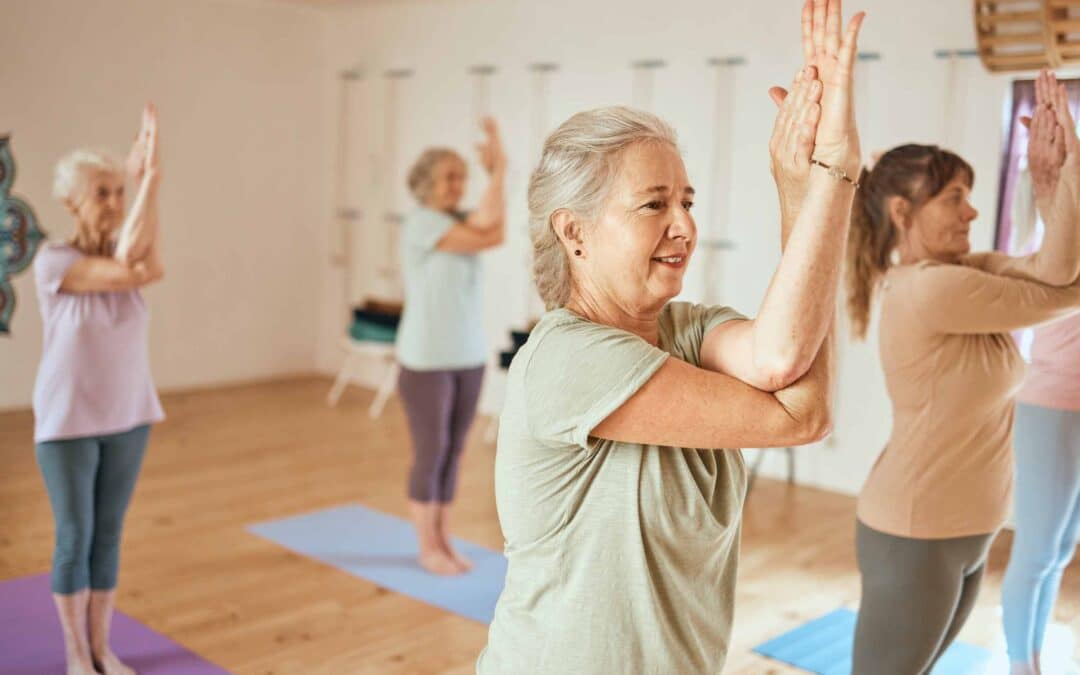It can be easy to take mobility for granted when we are young, but, with old age we can experience some difficulties in mobility. Getting around can feel more difficult and trips and falls can result in worse injuries. This guide aims to help raise awareness of the importance of mobility and tips for the elderly on maintaining and improving their body’s range of motion.
What is Mobility?
Mobility refers to how well a person can move their body, and the ease with which they can go about their day. Mobility can be confused with flexibility.. Flexibility focuses on a passive movement of a joint (how far a physiotherapist could move your leg to stretch a hamstring) whereas mobility refers to the active movement of a joint, so how far you can move your leg yourself without the use of hands or external pressure.
Mobility is the most studied physical ability, with direct correlations to quality of life and survival, so it is important to prioritise this as you grow older.
Why is Mobility Important?
Maintaining mobility is an important goal, a focus on mobility can increase a person’s ability to freely move through their daily activities without pain or discomfort. All movements are related to mobility, from picking things up off the floor, to maintaining hygiene and fitness levels. Being able to maintain range of motion in the body is a great way to reduce the risk of injury in day to day life.
If you are finding that doing day to day tasks results in aches and pains, or it is generally becoming more difficult, then it may be time to incorporate some mobility exercises into your daily routine.
Why do we Lose Mobility as we Age?
It is more difficult to stay mobile as you age. A certain level of mobility loss is due to ageing itself and is difficult to prevent. Around the age of 25 the body stops producing collagen, this is a structure that holds onto water which allows joints to remain supple and able to achieve their full range of motion.
There are also certain conditions that aremore likely to negatively impact mobility,for example, hypertension, heart disease, diabetes, arthritis and osteoarthritis can reduce our activity levels and mobility..
One of the main causes of reduced mobility is habit, and this is one that can be controlled. There are several ways you can prolong mobility and continue to live an active lifestyle and enjoy being mobile for as long as possible!
How can the Elderly Maintain Mobility
The main factor for maintaining mobility into old age is to stay active and practice mobility regularly, there are many ways to fit mobility exercises into your schedule, and lots of fun options to try.
Warm up and cool down
If you participate in any form of sports or exercise then the likelihood is that you are familiar with warming up and cooling down. You may be already doing moves that improve your mobility without knowing, this is an easy opportunity to add extra mobility into your day. Have a look at online resources such as YouTube where you can find guides on mobility specific exercises or flows that you can add into your warm up or cool down routine. You could also take part in a form of activity with an instructor led warm up and cool down. Here you can voice your intentions for improved mobility and the instructor will be able to help personally.
Low impact cardio
Another safe way to improve your daily movement is taking up a form of low impact cardio such as swimming or zumba, this is a great opportunity to be able to get in a mobility focused warm up and cool down to the beginning and end of your workout. Take a look at what your local senior centre has on offer and benefit from socialisation as well as increased mobility!
Stretching
Stretching can be a great addition to your day. Take 10 minutes to focus on stretching ithis can make a nice start or end to your day.
Stretching has many benefits for maintaining flexibility and mobility. Regular stretching helps release the facia tissue which is found around bones and muscles, keeping it healthy and allowing greater ease for muscles to glide past each other. Regular stiffness in the body can often be attributed to an unhealthy facia tissue, so remember to stretch!
Focus on posture
Poor posture is very common for the elderly and can make staying active more difficult. Poor posture can cause your neck and back muscles to overexert, leading to strained shoulders, neck pain, back discomfort, and potential joint damage. It’s crucial to be aware of maintaining an upright, neutral spine by sitting up straight.
Yoga
Yoga is a low intensity workout with a huge focus on mobility and getting the body to seamlessly flow through movements. Classes can be beneficial to getting flows and sequences tailored to your body and fitness goals. Free online videos also make improving mobility accessible to all. Yoga also has mental health benefits you may also reap the benefit of.
Nutrition
Nutrition may not be the first thing you think of when you want to improve or maintain your mobility, but it is useful to consider. Maintaining a well-balanced diet provides our bodies with the fuel and nutrients needed to remain active. As you grow older, your body requires different nutrients to keep your bones and muscles robust and healthy.
Vitamins D and K, calcium, and magnesium are vital for preserving bone density. Omega-3 fatty acids are beneficial in preventing and alleviating muscle and joint discomfort and inflammation.
Following an anti-inflammatory diet is a good idea. Inflammation is a prevalent issue among older adults, leading to joint and muscle stiffness and potentially causing spinal health problems. To combat inflammation and support the health of your muscles and joints, incorporate anti-inflammatory foods like nuts, berries, spinach, and fatty fish into your diet. Additionally, try to limit the intake of sugar, red meat, and fried foods.
Maintaining mobility as you age is crucial to prolonging your independence and wellbeing. There are many ways to promote your mobility in your day to day life and it only needs to take 10 minutes a day. At Little Croft Care Home we truly believe in supporting the independence of our residents in a safe way, contact our team if you are having trouble with your day to day mobility and looking after yourself, and find out how we can help.

